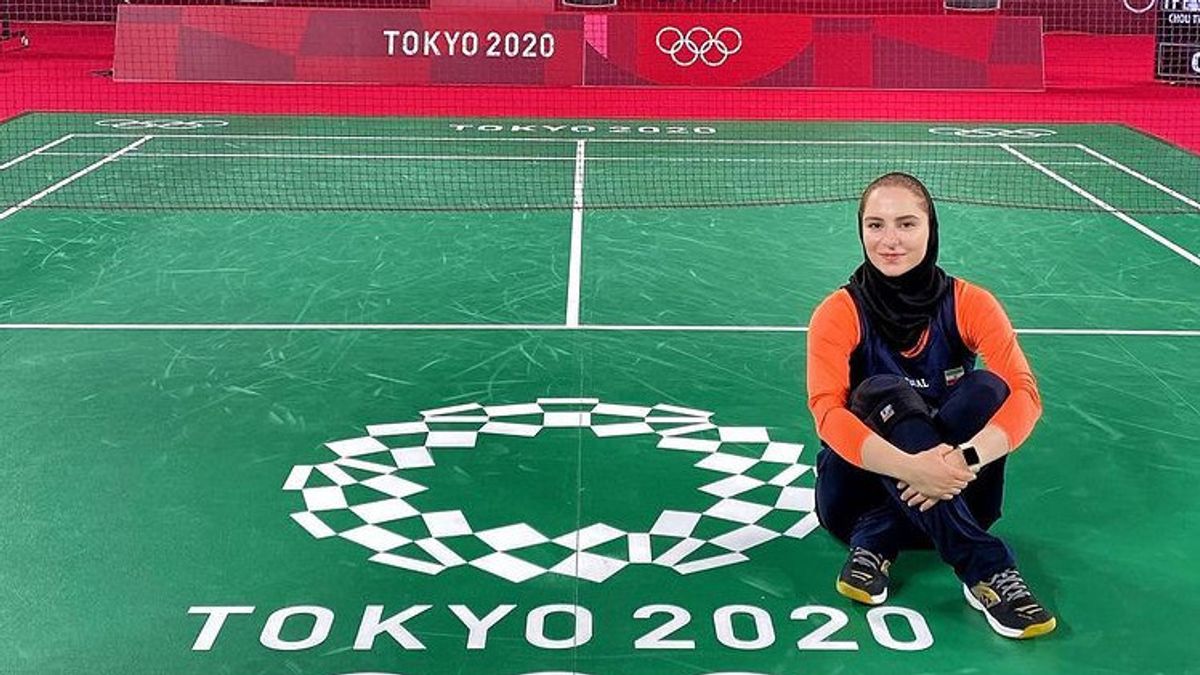JAKARTA - Female athletes have fought long and hard to get the right to choose what they wear to compete in the Olympics. At this year's Tokyo Olympics, more and more athletes and fans are raising their voices and taking action on the issue.
Of the more than 30 women who played badminton on Wednesday, including PV Sindhu from India and Tai Tzu Ying from Taiwan, about two-thirds wore shorts, while the others wore shorts, dresses and skirts, and one of them wore a hijab.
"I'm lucky to be able to wear whatever we want," said Sindhu, the Rio Olympic women's singles silver medalist who wore a blue dress as she beat Cheung Ngan Yi of Hong Kong 21-9, 21-16.
Soraya Aghaei Hajiagha from Iran, along with her coach, wore dresses, leggings and hijab in her match with He Bing Jiao from China.
Skirts and skorts - baggy shorts that look like skirts from the front - are also popular choices among players, including Lianne Tan of Belgium and Nozomi Okuhara of Japan.
On Sunday, Germany's women's gymnastics team wore full-body suits in qualifying to voice freedom of choice and encourage women to wear what makes them feel comfortable.
Meanwhile, the Norwegian women's beach handball team was fined 1,500 euros last week for wearing shorts instead of a bikini bottom, and deemed to be jeopardizing the "image of the ideal sport," according to the European Handball Federation and the International Handball Federation.
The rules state that bikini bottoms must be a maximum of 10 centimeters wide and have a "tight fit and cut to the top".
About a decade ago, ahead of the 2012 London Olympics, some officials at the Badminton World Federation (BWF) came under fire for a similar rule that said women had to wear skirts to make the sport more "feminine" and "attractive" to fans and sponsors. However, the rule was overturned before the Olympics.
"In hindsight, we took the wrong path, but we have learned from that and so have our manufacturers," said Nora Perry, a two-time world champion and board member of the BWF, whose sponsors include Adidas and Yonex.
"Yonex has accepted it because there are many Korean and Chinese girls who don't want to wear skirts."
Perry, who has more than 75 international titles in individual competitions, revealed when she played in the 80s, the fashion style of the time was to wear skirts and dresses with "some kind of lace underneath."
"It's great that a woman's voice is heard," said England's Kirsty Gilmour.
"I personally don't feel comfortable with skirts so I like the choice of short shorts, long shorts; Tai Tzu Ying likes sleeveless tops."
"We were lucky we didn't feel any pressure on our performances."
The English, Chinese, Japanese, Arabic, and French versions are automatically generated by the AI. So there may still be inaccuracies in translating, please always see Indonesian as our main language. (system supported by DigitalSiber.id)













